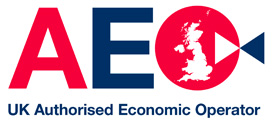 (1).png)
As consumers become increasingly eco-conscious, businesses are feeling the pressure to adopt sustainable practices, especially in packaging. Gone are the days when a simple cardboard box or plastic wrap would suffice. Today’s consumers expect companies to align with their values, demanding packaging solutions that are not only functional but also environmentally responsible.
The challenge? Balancing cost, efficiency, and environmental impact without compromising on quality or brand perception. In this guide, we’ll explore innovative packaging solutions that not only reduce environmental harm but also enhance your brand’s eco-friendly image.
The Growing Demand for Eco-Friendly Packaging
It’s not just about being green anymore - sustainable packaging has become a key indicator of a brand’s commitment to responsible business practices. With environmental issues in the global spotlight, consumers are more likely to trust and engage with brands that actively demonstrate eco-friendly values.
Beyond brand perception, there are numerous benefits to adopting sustainable packaging solutions:
- Lower Environmental Footprint: Reducing waste and using sustainable materials helps conserve resources and cut down on pollution. This is particularly critical as industries worldwide shift towards a circular economy model.
- Consumer Loyalty and Trust: Today’s shoppers are well-informed and highly selective. Brands that prioritise sustainability are more likely to attract loyal, repeat customers who align with these values.
 (1).png)
Innovative and Sustainable Packaging Solutions
The key to adopting sustainable packaging is understanding the available options and their impact on your operations. Here are some innovative solutions:
- Recyclable and Recycled Materials
One of the most effective and accessible options is using recyclable materials like cardboard, kraft paper, or corrugated board. These materials not only reduce waste but also lower production costs in the long term. For example, opting for recyclable materials such as kraft paper packaging or using recycled cardboard boxes can significantly cut down on waste. - Compostable and Biodegradable Options
While recyclable packaging is an excellent option, compostable materials take sustainability to another level. Packaging made from plant-based materials, like cornstarch or seaweed, decomposes naturally without harming the environment. This option is particularly appealing for businesses wanting to go the extra mile in showcasing their eco-consciousness. - Minimalist Packaging Designs
Excessive packaging is not only wasteful but also unpopular among consumers. Minimalist packaging focuses on reducing unnecessary materials while still providing adequate protection for products. This could involve eliminating layers of plastic wrap, using smaller, more efficient packaging sizes, and reducing filler materials. A minimalist approach also has the added benefit of cutting shipping costs due to reduced weight and volume. - Reusable Packaging
Reusable packaging offers a dual benefit: reducing waste and enhancing brand visibility. Durable materials like cloth bags or glass containers can be designed for multiple uses, giving customers a practical reason to keep interacting with your brand long after the initial purchase. - Edible Packaging Innovations
While still emerging, edible packaging represents a truly innovative leap in sustainable packaging. From seaweed-based wraps to rice paper, these materials are safe for consumption and eliminate waste altogether.
Challenges in Implementing Sustainable Packaging
While the benefits of sustainable packaging are clear, transitioning to eco-friendly materials does come with challenges:
- Higher Initial Costs: Some sustainable materials may be more expensive upfront, especially if sourced in smaller quantities. However, investing in sustainable practices can lead to long-term savings and better consumer relationships.
- Supply Chain Adaptation: Transitioning to sustainable packaging might require changes in supply chain management, including sourcing new suppliers and ensuring consistent quality.
 (1).png)
Embracing Sustainability for Long-Term Growth
Sustainable packaging isn’t just a trend - it’s a shift towards a more responsible way of doing business. By investing in eco-friendly packaging, companies can significantly reduce their environmental footprint while building stronger relationships with eco-conscious customers. This is particularly crucial as regulations continue to tighten around waste reduction and environmental impact.
Brands that lead the way in adopting sustainable packaging practices are positioning themselves not just as businesses but as responsible leaders in their industries. This shift towards sustainability doesn’t just improve public perception - it fosters long-term growth by aligning with changing consumer expectations.
Drive Sustainability with Thoughtful Packaging Choices
Incorporating sustainable packaging solutions requires careful planning and strategic decision-making. From opting for recyclable and compostable materials to exploring minimalist and reusable options, there are numerous ways businesses can reduce waste and demonstrate their commitment to the environment.
By proactively adopting sustainable packaging practices, your brand can play a pivotal role in reducing environmental impact while enhancing its reputation among eco-conscious consumers. Ultimately, this shift benefits not only the planet but also your long-term growth and customer loyalty.







